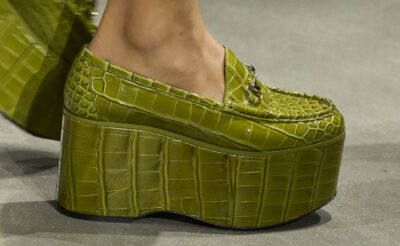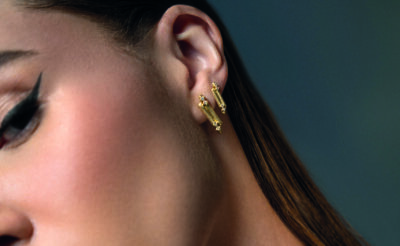Gemfields’ Gemmologist, Elena Basaglia, clears up the murky world of sustainable mining
Have you ever stopped to think about where that sparkler on your left hand came from, or those studs adorning your earlobe? For years, decadent investment pieces have been taken at face value, a magnificent stone, a twinkling pendant, a dazzling pair of diamonds. You might know where you bought them, but have you ever stopped to think about how they got there?
In tandem with the buzz around ethical fashion, buyers are becoming increasingly concerned about how their jewellery is made. The diamond world is often thought of as murky and, indeed, the surface glamour often hides an unsavoury grit.
Historically diamond mines have been rife with conflict and have frequently had a negative impact on the communities around them. But now the tides have turned, and jewellers are finding their own ways to give back, investing in local communities, sourcing responsible materials and establishing ways of tracing stones back to their source.
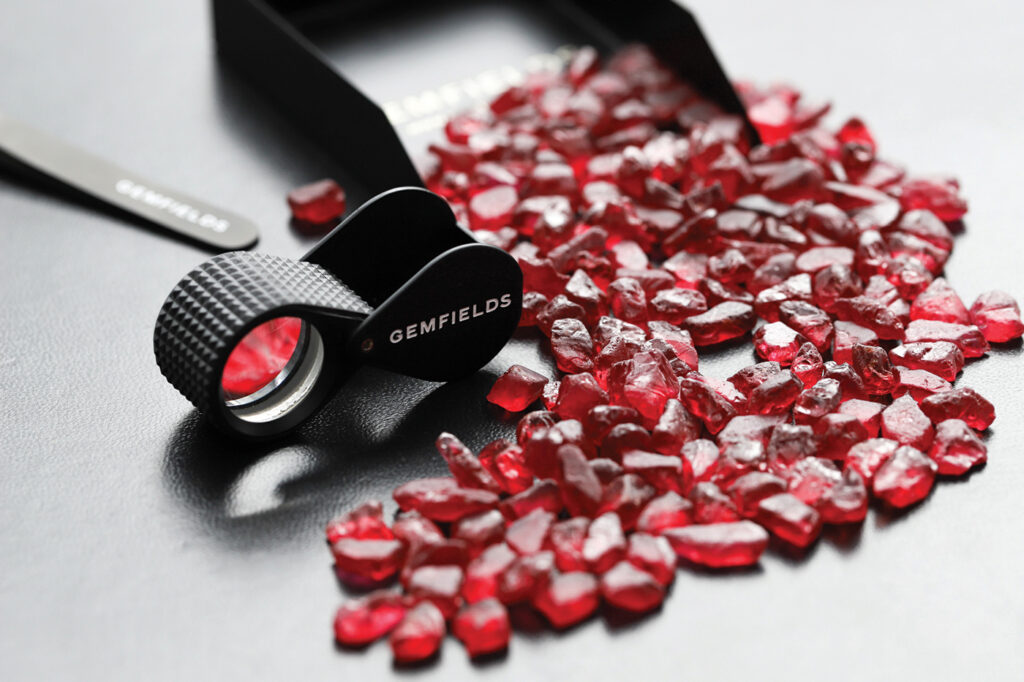
Rubies at Singapore Auction
There’s no industry definition as to what ‘ethical’ means. Really a consumer has to decide what is important to them and how to balance up their preferences with the product and brand. For instance, ethics covers a wide range of issues, how the metal or gemstone has been mined, whether there are any labour-related risks in the supply chain, whether the company has paid its fair taxes or whether there has been any environmental damage caused in the making of the jewellery.
There is no ‘one size fits all’ approach, and whilst the industry at large is trying to agree some basic principles and guidelines, because of the sheer diversity of the sector, it is really down to consumers to ask questions of the jewellery brands.
“Ethical or responsible sourcing is becoming increasingly important,” explains Gemfields’ Elena Basaglia. “People are more and more interested in where goods and materials come from and are making more values-driven choices about their lives, prepared to forgo products that don’t meet their own personal standards.”
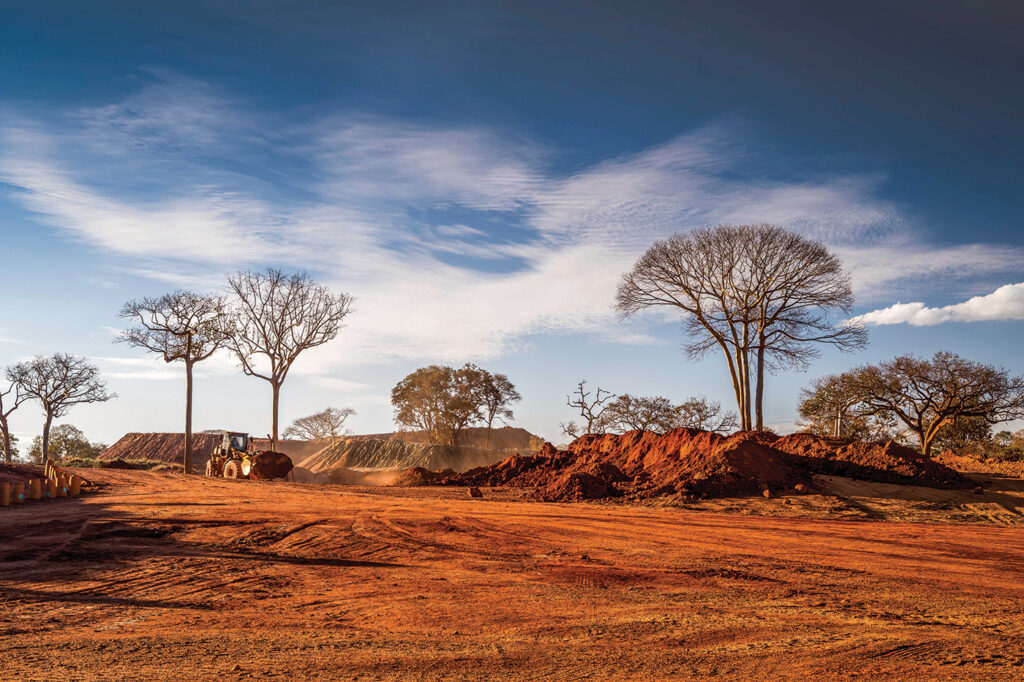
Mining at Montepuez Ruby Mine
The focus on sustainability in the jewellery sector has been growing, but across the industry is still relatively new, particularly for coloured gemstones. Gemmologist Elena goes on to help uncover the origin of jewels, during a time when the jewellery industry is rightly undergoing heightened supply chain scrutiny with consumers increasingly asking for certificates of origin, requiring much improved knowledge and documentation at the retail level.
Specialising in emeralds mined from Zambia and rubies from Mozambique, Gemfields, a world-leading supplier of responsibly sourced, coloured gemstones, works to the principle that those who mine gemstones should do so with transparency, legitimacy and integrity.
As primarily a mining company, though also owner of Fabergé, Elena explains that, “being responsible is focused on the most material part of our business, the operations. This encompasses environmental management, health & safety, community engagement and human rights, but beyond this, in how transparently we export and sell the rough gemstones and support wider industry best practices.”
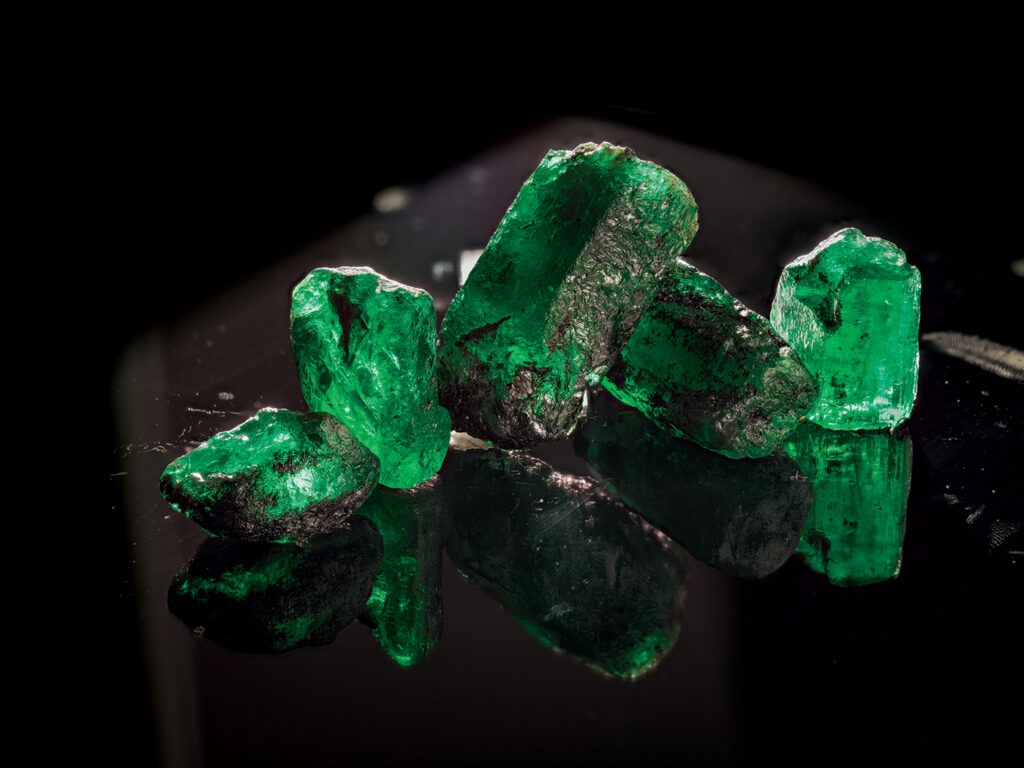
Rough emeralds ehotographed by Casey Moore
Specifically at their mines it means following best practice where possible, championing organised, large scale and controlled mining operations, the sensitive and appropriate use of security to protect their people and product, working practically in partnership with communities to create livelihoods projects and managing the impact on the environment on a continuous basis.
“We typically invest more than $1m into our local communities each year in education, agriculture, health and conservation projects.”
However, mining gems with this focus doesn’t come without challenges, with the majority of the world’s coloured gemstones being mined ‘artisanally’ and therefore not subject to very controlled, environmentally sensitive methods. Whilst there is no single ‘best practice’ approach, the challenge for consumers of gemstones is knowing where and how the gemstones have been mined.The jewellery industry is ancient and therefore traditionally opaque without a consistent way of valuing gemstones.

Gemfieds invests in education, like this Mozambique primary school
At Gemfields, “we’re trying to change this by being open about our mining practices, revenues and taxes and selling our gemstones via an auction platform to provide authorised auction partners and government officials with a transparent, repeatable and consistent point of sale. This platform is important for the jewellery brands who buy from our auction partners in order to close the gap of uncertainty in the supply chain and minimise this opaqueness.”
Not only do Gemfields aim to operate in a manner that contributes positively to national economies, building lasting, sustainable livelihoods for the communities around their mines, they are also committed to introducing new initiatives.
Elena shares more about this, “Gemfields introduced the most technologically advanced coloured gemstone sort house in the world at its operations in Mozambique, with state-of-the-art equipment, like optical sorting machines. In addition, a proprietary grading system, pioneering auction platform and an active marketing presence means Gemfields plays a significant role in the rise of African gemstones. This endeavour is coupled with a strong belief that coloured gemstones should create a positive impact for the country and community from which they originate.”
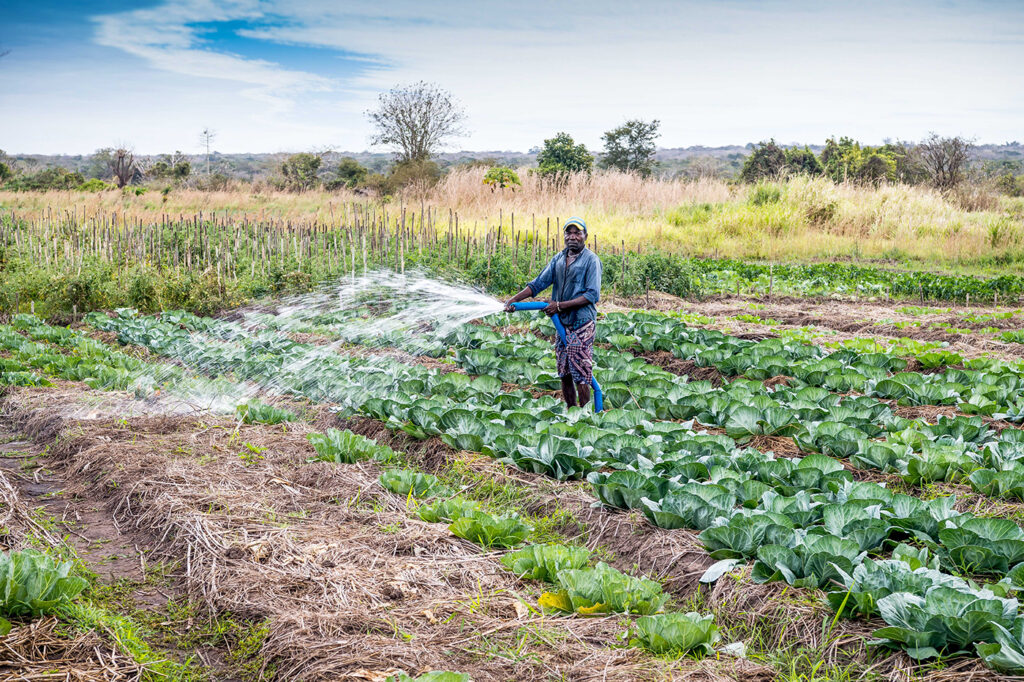
Gemfields also puts money and resources back into local agriculture
Responsible sourcing for Gemfields means industry- leading policies and practices across operations, transparency in our auction sales process, an active role in working groups to modernise the sector, projects to improve health, education and livelihoods for the communities around our mines and conservation efforts to protect Africa’s great wildlife and biodiversity.
To give an example, Elena shares how Gemfields was the first test partner of the Emerald Paternity Test with the Gübelin Gem Lab in Switzerland. This uses nanotechnology to mark stones with an invisible imprint that gives their mining location, miner and mining period.
“We now have a commercial relationship with the lab which sees our highest quality emeralds from the Kagem mine in Zambia coded with this technology before going to auction. The imprint can withstand emerald treatments and the cutting process and can be accessed at any stage of the supply chain, so this has really positive implications in terms of proving provenance and boosting consumer confidence.”
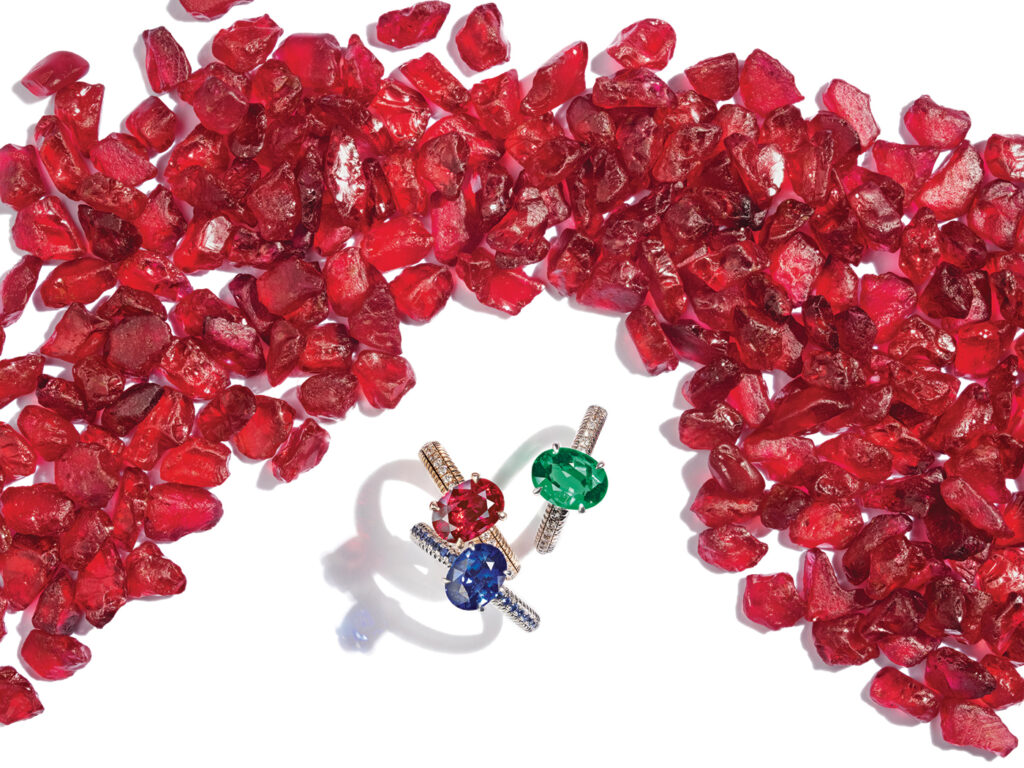
Three Colours of Love, Emotion and Charmeuse Rings, GEMFIELDS
The word may be slightly clichéd by now, but there’s no denying the meaning, Millennials are the most aware generation to date, attaching far greater importance to understanding the origin of their purchases, the conditions under which they were produced and therefore whether their purchases will benefit those involved throughout the supply chain.
However, the red carpet is also a great platform for ethical jewels. Elena shares, “the rise in coloured gems has certainly been helped by celebrities and young royals opting for colourful engagement rings and wearing more colour in their jewellery. Princess Eugenie was proposed to with a padparadscha sapphire and wore an emerald tiara at her wedding, the Duchess of Sussex chose an aquamarine ring of Diana’s for her wedding dinner, whilst the Duchess of Cambridge wears Diana’s sapphire ring as her engagement ring.”
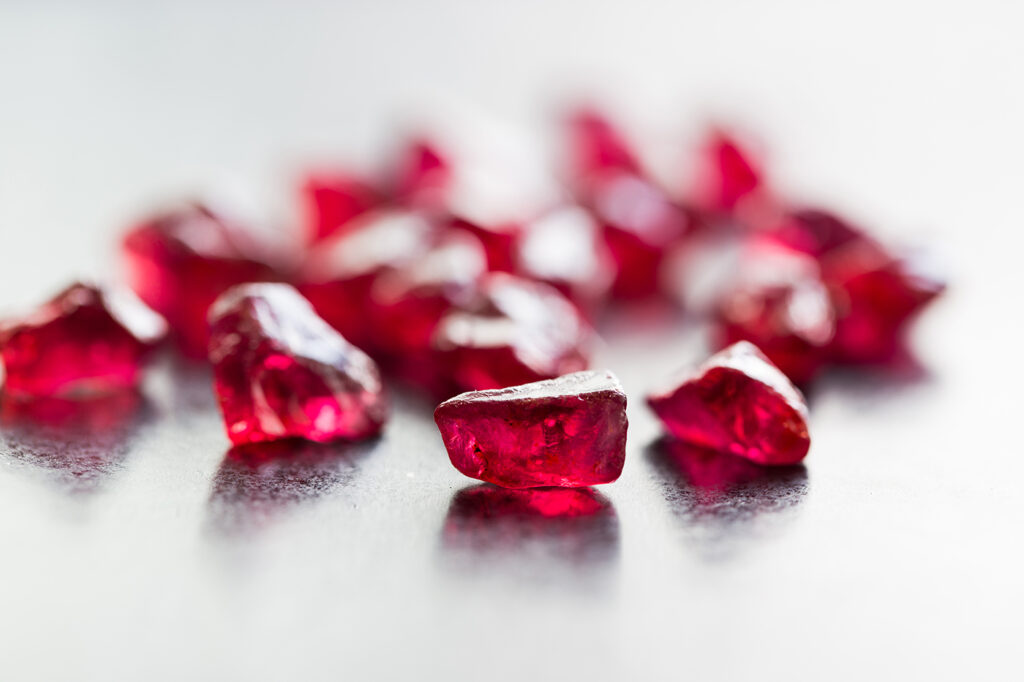
Coloured stones continue to rise in popularity
“Plus, who can forget Halle Berry and Zoe Saldana’s striking emerald engagement rings, Elizabeth Hurley and Penelope Cruz’s sapphire engagement rings and Eva Longoria’s ruby. There is definitely an increased desire for those in the spotlight to champion responsibly sourced jewellery and gems too.”
Summing up the future of sustainable gems, Elena believes that, ‘responsible sourcing will receive ever-increasing attention and become progressively more important to consumers, making gemstone provenance perhaps the key driving factor.’ So, the message is clear, when buying gemstones, always ask.
- Words by Lucy Bloom


